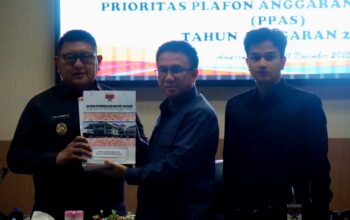Extended play sessions are a common phenomenon in gaming and recreational activities, where individuals engage for long periods beyond initial expectations. Understanding the psychological factors that drive such prolonged engagement offers valuable insights for designers, educators, and players alike. This article explores the core principles that underpin extended play, illustrating how they are applied in modern game design, such as in drop the boss, and their implications for mental health and ethical considerations.
Table of Contents
- Introduction to the Psychology of Extended Play Sessions
- Fundamental Psychological Concepts Underpinning Extended Engagement
- The Role of Design Elements in Promoting Extended Play
- Cognitive and Emotional Drivers of Extended Play Sessions
- Modern Examples of Psychological Techniques in Play Design
- Non-Obvious Psychological Factors Influencing Extended Play
- The Impact of Extended Play Sessions on Mental Health and Wellbeing
- Ethical Considerations in Designing for Extended Engagement
- Future Trends and Innovations in Promoting Extended Play
- Conclusion: Applying Psychological Principles to Enhance Engagement
1. Introduction to the Psychology of Extended Play Sessions
Extended play sessions refer to prolonged periods of engagement in gaming or recreational activities, often spanning hours or even days. This phenomenon is driven by complex psychological factors that motivate individuals to persist despite fatigue or competing responsibilities. Recognizing these factors is essential for designing engaging experiences and promoting healthy gaming habits.
Games and activities leverage principles such as reward systems, mastery, and social interaction to maintain interest. For example, popular multiplayer games often incorporate social rewards and competitive elements that encourage players to keep returning. Understanding how these mechanisms work allows creators to craft experiences that are both engaging and respectful of players’ wellbeing.
2. Fundamental Psychological Concepts Underpinning Extended Engagement
a. Intrinsic vs. extrinsic motivation
Intrinsic motivation arises from internal satisfaction, such as the joy of mastery or discovery, while extrinsic motivation depends on external rewards like points or badges. Both play crucial roles in sustaining engagement. For instance, a player might enjoy overcoming challenges (intrinsic) or be driven by rewards like bonus levels (extrinsic).
b. The reward system: dopamine release and reinforcement mechanisms
Activities that trigger dopamine release reinforce behavior, making players want to repeat certain actions. This is why achieving a high score or unlocking a new level creates feelings of pleasure, encouraging continued play.
c. Flow state: a mental zone that promotes deep immersion
Flow occurs when challenges match skill levels, leading to complete absorption. Well-designed games aim to induce flow, which can cause players to lose track of time and become deeply engaged.
3. The Role of Design Elements in Promoting Extended Play
Design features such as progression systems, rewards, and sensory stimulation are critical in maintaining interest. These elements tap into psychological principles to encourage players to keep exploring and improving.
- Progression systems and incremental rewards create a sense of achievement, motivating continued engagement.
- Variable rewards, such as unpredictable bonus zones (e.g., the White House in certain games), leverage the unpredictability principle to maintain excitement.
- Sensory and emotional stimulation—like vibrant visuals and compelling sounds—enhance immersion and emotional response.
4. Cognitive and Emotional Drivers of Extended Play Sessions
Players are often motivated by a desire to achieve mastery, driven by achievement desire and competence. Additionally, social factors such as FOMO (fear of missing out) and competitive leaderboards encourage ongoing participation.
The emotional rollercoaster—excitement from victories, frustration from setbacks, anticipation of upcoming challenges—keeps players emotionally invested and eager for the next session.
5. Modern Examples of Psychological Techniques in Play Design
a. “Drop the Boss” as a case study
This game exemplifies how incorporating reward multipliers such as Mega Caps and Somersaults sustains interest over time. Bonus zones like the White House, featuring high multipliers, create moments of high excitement and unpredictability, fueling players’ motivation to continue.
By integrating these mechanics, drop the boss demonstrates how game design can leverage reward systems and randomness to promote extended engagement.
b. The use of game mechanics to sustain motivation
Features like achievement streaks, bonus multipliers, and unpredictable rewards are common tools to keep players invested over long periods. These mechanics activate psychological drivers such as curiosity, mastery, and the desire for social recognition.
6. Non-Obvious Psychological Factors Influencing Extended Play
Beyond the obvious, cognitive biases significantly influence prolonged engagement. The endowment effect makes players value their progress more highly, while the sunk cost fallacy compels them to continue playing to justify prior effort.
Narrative hooks and storytelling create emotional investment, making gameplay feel meaningful. Social comparison through leaderboards fosters a competitive spirit, motivating players to improve their rankings and prolong their sessions.
“Designing for extended engagement requires understanding the subtle psychological levers that keep players invested, often beyond their initial intentions.”
7. The Impact of Extended Play Sessions on Mental Health and Wellbeing
While extended play can foster skills, relaxation, and social bonds, excessive engagement poses risks such as addiction, burnout, and decreased time awareness. Recognizing these risks is essential for responsible design and individual self-regulation.
Strategies such as setting time limits, incorporating breaks, and promoting mindfulness can help maintain a healthy balance, ensuring that extended play remains a positive experience.
8. Ethical Considerations in Designing for Extended Engagement
Designers must balance engagement with user wellbeing, avoiding manipulative techniques that exploit psychological vulnerabilities. Transparency about reward structures and avoiding exploitative loops are ethical priorities.
Content creators have a responsibility to foster environments that promote enjoyment without encouraging harmful overuse, emphasizing informed consent and user autonomy.
9. Future Trends and Innovations in Promoting Extended Play
Emerging technologies like adaptive algorithms can personalize experiences, maintaining challenge and interest for each player. Virtual reality and immersive environments are poised to deepen engagement further.
Incorporating latest psychological research into design strategies will enable creators to craft experiences that are captivating yet health-conscious, fostering sustainable engagement.
10. Conclusion: Understanding and Applying Psychological Principles to Enhance Engagement
The mechanisms behind extended play are rooted in well-studied psychological principles such as motivation, reward, and immersion. Recognizing these allows designers to create compelling experiences while safeguarding player wellbeing.
Practitioners should leverage these insights responsibly, fostering environments that are both engaging and healthy. As game design evolves, integrating ethical considerations with innovative techniques will be crucial for sustainable enjoyment.
Ultimately, understanding the psychology of extended play helps in shaping activities that are not only addictive but also enriching and balanced, ensuring a positive impact on users’ lives.

















